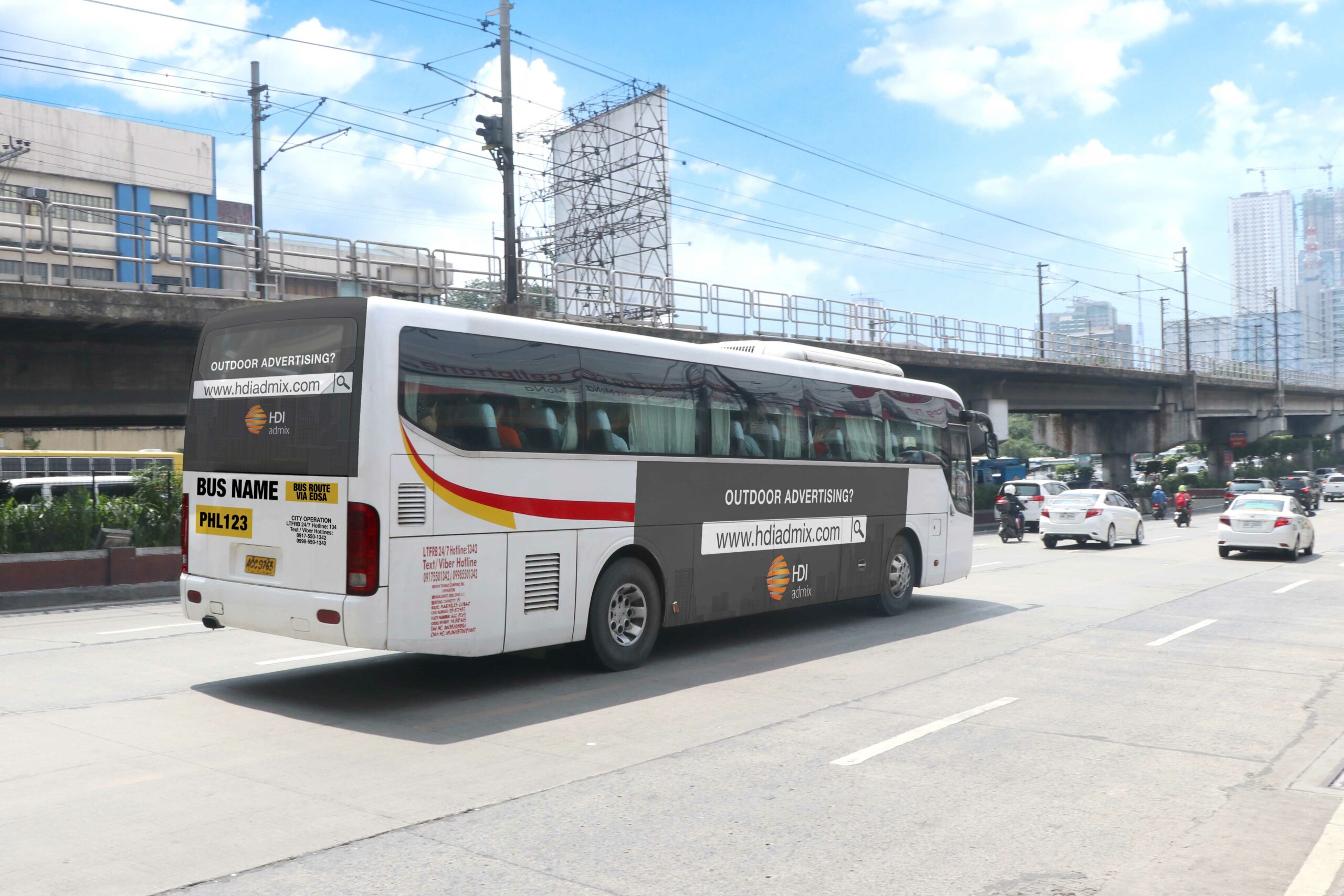Effective Transit Advertising Philippines to Expand Your Audience
Effective Transit Advertising Philippines to Expand Your Audience
Blog Article
How Transportation Advertising Can Change Mass Transit Spaces Into Dynamic Marketing Operatings Systems
Transportation advertising and marketing holds substantial capacity to redefine public transport spaces into vibrant advertising systems that engage and notify. By making use of innovative formats such as digital displays and interactive booths, brands can not only reach a diverse target market yet additionally enhance the total commuter experience. This method develops an one-of-a-kind chance for brand names to connect with consumers in a setup that is commonly forgotten. As we check out the complex benefits and evolving approaches of transit marketing, it elevates the question of exactly how this makeover could redefine our communications with both brands and the metropolitan environment.
Advantages of Transit Advertising

Additionally, transit advertising is extremely cost-effective compared to typical media. It permits advertisers to attain high perceptions at reduced costs, maximizing roi. The restricted audience of travelers provides an opportunity for brands to convey their messages to individuals who are commonly receptive throughout their traveling times.
Moreover, the dynamic nature of transit marketing allows projects to be upgraded often, guaranteeing that messaging stays relevant and timely. This flexibility can be essential in replying to market trends or marketing occasions, keeping the brand name top-of-mind for consumers. Finally, the prevalent existence of transit advertising and marketing adds to brand recall; repeated exposure within acquainted travel contexts enhances brand awareness and promotes consumer loyalty, eventually driving sales and improving brand online reputation.
Kinds of Transportation Advertising And Marketing
Mass transit systems offer different layouts for marketing, each dealing with different advertising and marketing approaches and audience engagement techniques. One popular type is exterior bus and train covers, which cover the entire car and create a mobile signboard result, enabling high presence in city environments. These covers can catch attention as they go across active roads, reaching a varied audience.
An additional popular style is indoor advertising, which consists of posters, digital displays, and advertisements on transportation seats. These positionings involve travelers throughout their journey, reinforcing brand messaging in a restricted area. Digital displays, in particular, use the advantage of dynamic web content, allowing marketers to upgrade messages in real-time.
Terminal marketing is also substantial, including posters, banners, and interactive stands within transportation stations. These ads utilize foot web traffic and can target particular demographics based upon place.
Last but not least, advertising collaborations with transit authorities can result in special projects, such as themed transit experiences or occasions, boosting the general engagement with commuters. Each type of transit advertising and marketing supplies unique benefits, enabling brand names to customize their approach to successfully reach their target audience within the general public transport environment.
Involving Commuters Efficiently
Commuters are significantly flooded with advertising and marketing messages throughout their day-to-day trips, making it necessary for brands to involve them in ingenious ways. To catch interest in this congested room, advertisers have to focus on creative thinking and relevance. Making use of captivating visuals and succinct messaging can considerably enhance the probability of interaction.
Interactive elements, such as QR codes or enhanced fact attributes, can additionally transform fixed ads into immersive experiences, promoting a much deeper connection with the target market. Brand names should focus on resolving commuters' requirements and interests, tailoring messages to resonate with their way of life, whether with promotions for neighborhood organizations or solutions developed to boost their travelling experience.
Furthermore, timing plays an essential duty; strategically putting advertisements throughout top travelling hours can make best use of exposure and influence. Involving travelers efficiently additionally includes leveraging social media sites combination, enabling guests to share their promotions or experiences directly from transportation platforms, thereby magnifying brand reach.
Fundamentally, reliable involvement rests on comprehending the traveler journey and producing engaging, interactive, and appropriate advertising and marketing experiences that not just catch focus but likewise drive activity and commitment. By doing so, brands can transform public transport right into a vibrant advertising platform that reverberates with its target market.
Measuring Marketing Influence
Just how can brand names accurately analyze the performance of their marketing campaign en route environments? Measuring the impact of transportation advertising needs a multifaceted strategy that integrates measurable and qualitative metrics. One common technique is tracking engagement with mobile analytics, where brands can evaluate foot traffic patterns and application communications in the past, throughout, and after campaigns.
Studies can provide valuable understandings into brand recall and consumer view, enabling brand names to determine exactly how well their messages resonate with travelers. Additionally, keeping track of social networks engagement related to details campaigns can disclose shifts in public understanding and brand name conversation.

Additionally, collaborating with transportation firms can improve measurement precision, as they commonly possess thorough group information on ridership trends. By incorporating these methodologies, brands can develop a comprehensive understanding of their advertising performance, ensuring that their campaigns not just reach however additionally impact their target market effectively.
Future Trends in Transit Advertising
A substantial shift is expected en route advertising as technological innovations and changing consumer habits improve the landscape. Transit Advertising Philippines. The integration of interactive media and electronic display screens is anticipated to improve involvement, permitting brands to supply dynamic content that resonates with varied find this audiences. As public transportation systems accept wise innovation, advertisers will utilize real-time data analytics to customize messages additional hints based upon guest demographics and habits
In addition, increased fact (AR) is positioned to transform the method travelers interact with advertisements. By supplying immersive experiences, AR can change an ordinary journey into an engaging story that catches interest and fosters brand name commitment. This technology will likely motivate marketers to produce even more experiential campaigns that drive customer interaction.
Sustainability is another crucial trend influencing transit advertising. As environmental consciousness grows, brand names will significantly seek to line up with green methods, utilizing lasting products and advertising eco-friendly efforts within their campaigns.
Final Thought
In verdict, transit marketing offers considerable benefits by improving brand name visibility and engaging a restricted audience. As trends progress, the potential for innovative interactions between commuters and brand names is poised to grow, making sure that transit advertising stays an important element of modern-day advertising strategies.
Transportation advertising and marketing holds significant possibility to redefine public transportation rooms right into vivid marketing systems that notify and engage. The pervasive visibility of transit advertising contributes to brand name recall; repeated exposure within acquainted traveling contexts strengthens brand recognition and cultivates consumer commitment, ultimately improving and great post to read driving sales brand track record.
Just how can brands precisely analyze the efficiency of their advertising and marketing projects in transit settings?In conclusion, transit advertising and marketing provides significant benefits by enhancing brand exposure and involving a restricted target market. Transit Advertising Philippines. As patterns evolve, the possibility for cutting-edge communications between brands and commuters is poised to expand, ensuring that transportation marketing remains an important part of modern advertising and marketing methods
Report this page